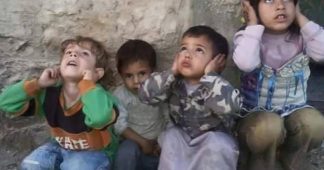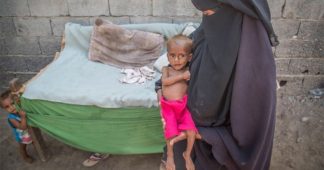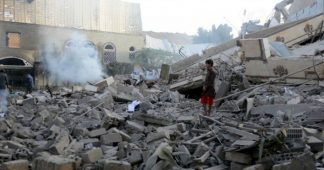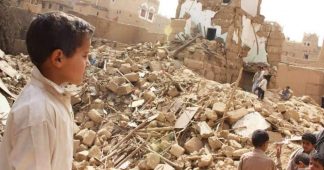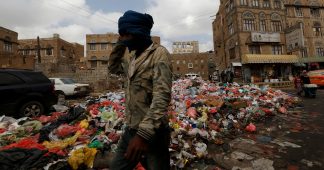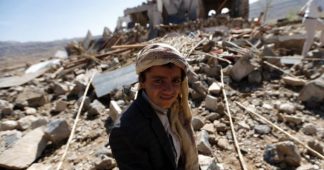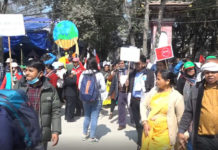ERC O’Brien’s statement to the Security Council on Yemen
26 Ene 2017
Mr. President,
I thank the Special Envoy for his contribution.
Since my last briefing, the humanitarian situation in Yemen has further deteriorated while the armed conflict continues to intensify with daily airstrikes and armed clashes. In the last week we received reports of at least 365 conflict-related security incidents, up from 231 the previous week, and at least 100 airstrikes alone in Taizz governorate. During the last quarter of 2016, approximately 2,400 incidents consisting of airstrikes, armed clashes and shelling were reported throughout Yemen. This is a 12 per cent increase from the previous three months. Today, I am particularly concerned about civilians caught up in the cross-fire in Mokha, Taizz governorate’s coastal region. I have received reports that more than 5,000 families are fleeing.
It is clear, that in this fight the most affected are the ordinary Yemeni people who continue to suffer. Overall more than two thirds of the population – an alarming 18.8 million, as you heard – is in need of humanitarian and protection assistance, including an astounding 10.3 million Yemenis who require immediate assistance to save or sustain their lives. This is about the size of the entire population of Sweden and the numbers are rising. More than 2 million people are internally displaced. By 31 December, 7,469 Yemenis had been killed and 40,483 injured due to the conflict. The true number is likely to be higher as we only report cases by health facilities that are still functioning – a mere 45 per cent of those.
Overall, the plight of children remains grim, with a child under the age of five dying every 10 minutes of preventable causes. A grim illustration of the impact on children, are the airstrikes two weeks ago near a petrol station next to a school in Sana’a governorate’s Nihm district that resulted in the death of one school girl and injury to four others. A week earlier, on 3 January, a school was completely destroyed in Sa’ada governorate’s Safra district, reportedly – and luckily – without any child casualties. Since the hostilities began in March 2015, more than 1,400 children have been killed and over 2,140 injured. Another 1,441 children have been recruited by warring parties, some as young as 8 years old. The actual numbers are likely to be much higher.
Beyond the direct casualties of the armed conflict, there are also the so-called ‘silent deaths’ of Yemenis that go largely unnoticed and unrecorded. Girls, boys, women and men are dying of hunger and diseases that are easily preventable and treatable. Unfortunately, vital food commodities and medicines cannot be imported easily due to access restrictions imposed by all parties. People with chronic diseases, including high blood pressure and diabetes, who are not receiving life-sustaining treatment due to medical shortages are slowly dying.
The conflict in Yemen is now the primary driver of the largest food security emergency in the world. If there is no immediate action, famine is now a possible scenario for 2017. 14 million people are currently food insecure of whom half are severely food insecure. This means that Yemenis are not able to feed themselves adequately and are frequently forced to miss meals and eat food with poor nutritional value. At least 2 million people need emergency food assistance to survive. Again, the situation for children is especially grave. 2.2 million babies, boys and girls are acutely malnourished and almost half a million children are suffering from severe acute malnutrition. This represents a 63 per cent increase since late 2015. Children are going to bed hungry every night.
Shockingly, incidents of gender-based violence have reportedly increased by over 63 per cent since before the conflict. As of this month, there have been 10,806 reported cases. To be clear, this means more rapes, more forced marriages, more child brides and many more unspeakable acts of violence against girls, and boys and women compared to two years ago.
Mr. President,
All parties to the conflict are failing to take precautions to spare civilians and civilian infrastructure. So far, the UN have verified over 325 attacks on schools, health facilities, markets, roads, bridges and even water points. Over two thirds of the damage to public infrastructure is a result of airstrikes. Violations of international humanitarian and human rights law continue unabated and largely with impunity. Attacks against hospitals, schools and other protected civilian structures and facilities must stop immediately. International norms must be respected.
Granting rapid and unimpeded humanitarian access is a key obligation under IHL. Yet, people face major challenges in accessing humanitarian aid and humanitarian actors face impediments to access people in need, including due to active fighting, insecurity, bureaucratic hurdles and a lack of funding.
Mr. President,
The closure of Sana’a airport to commercial flights since 9 August has a disproportionate impact on Yemen’s civilians and further increases the humanitarian caseload. The lack of in-country specialist medical care means that more than 20,000 Yemenis are unable to seek treatment abroad. Similarly, life-saving medicines cannot be flown in. Students are unable to resume their studies abroad. And Yemenis outside the country [who] are seeking to go home are unable to do so. In addition, the suspension of commercial flights has also meant that journalists can no longer travel to Sana’a and report on Yemen’s grave humanitarian situation.
We expect all parties to the conflict, including the Government of Yemen to do the utmost with the Saudi-Led Coalition to re-open the airport and airspace to commercial flights. This could include addressing security concerns through previously established flight routing through Bisha, Saudi Arabia or other airports within the Saudi-led coalition.
Mr. President,
Humanitarians now fill in for collapsing public institutions, which at this scale is both beyond our capacity and our remit. The health care system is in decline. Public infrastructure such as bridges, ports, as well as water and sanitation systems are being destroyed. The near-collapse of the country’s social security and economic institutions has a multiplier effect on humanitarian needs. Yemen’s poorest families, widows, orphans, people with disabilities and the elderly are no longer receiving a monthly allowance of 2,500 rials (about US$10) per person. In addition, 1.25 million civil servants, including nurses, doctors and teachers do not receive salaries regularly. Yemen’s middle class is growing poorer and many are no longer able to provide for their families. While a batch of money arrived in Aden earlier this month, no information has been received whether it will reach civil servants in all governorates.
Yemen’s contracting economy, the associated liquidity crisis, and the continued depreciation of the local currency mean further hardship for Yemen’s people. 90 percent of Yemen’s food and fuel and almost all medical supplies are imported. Only 40 per cent of pre-crisis amounts of fuel are now entering the country. Import restrictions are leading to price increases. For instance in December, the price of wheat flour was 25 per cent higher than in the pre-crisis period. Petroleum prices rose by more than 33 per cent. Cooking gas is now 60 per cent more expensive.
The sharp decline in the Central Bank’s foreign reserves combined with its move to Aden and lack of liquidity has a ruinous socio-economic impact. Yemen could run out of wheat within months unless traders can access lines of credit in the coming weeks. Foreign banks no longer accept financial transactions with many of Yemen’s commercial banks. We must mobilize to sustain the traders’ ability to import, replenish the country’s stocks of staple food and reverse the trend of growing food insecurity and potential starvation. In addition, some humanitarian organizations are struggling to find enough cash to implement projects. The end result is a country in economic distress, which is translating into acute humanitarian need.
Mr. President,
Let me provide you with an update on the United Nations Verification and Inspection Mechanism – known as UNVIM. As of 23 January 2017, UNVIM has cleared 324 vessels from 394 requests. Since the beginning of operations, over 5 million metric tons of cargo has been discharged, including 2 million tons of food and just over 1 million tons of fuel. During this period, 54 vessels were not cleared – 20 vessel clearances were revoked, 28 cancelled and six were declined. The mechanism has completed 21 inspections of suspicious cargo or information presented. Delays in receiving clearances are also due to restrictions imposed by the Saudi-led Coalition such as the hampering of vessels’ access to Yemeni Red Sea ports and the absence of clear lists of prohibited items.
Once goods are offloaded, there are often additional bureaucratic impediments that slow down the transport of commodities to their final destinations. All parties have to be held responsible for these impediments. Moreover, ports have been damaged and need to be repaired. Hudaydah port, Yemen’s main port through which 80 per cent of imports arrive and which was damaged in the conflict in 2015, has not been rehabilitated. A vessel carrying four WFP-procured mobile cranes has arrived in the Red Sea, but has been ordered by Saudi authorities to leave Yemeni waters and is now anchored 15 miles off Yemen’s coast. The vessel is awaiting the Coalition’s approval to berth at the port. These cranes will boost the port’s capacity in handling humanitarian cargo. Two of the cranes will be used exclusively by the UN – by WFP – and help expedite the timely delivery of vital humanitarian aid supplies.
In spite of the difficult conditions and tremendous challenges the humanitarian community delivers. Together in 2016, we reached 5.6 million Yemenis in need with direct assistance and via a coordinated response in 22 governorates. There are five operational hubs – in Aden, Hudaydah, Ibb, Sa’ada, and Sana’a. More than 114 humanitarian organizations are working in Yemen and are delivering life-saving and life-sustaining assistance across the entire county.
In the darkness of conflict, there are some glimpses of hope. Thanks to the swift intervention by humanitarian partners, who established 26 cholera treatment centres and launched a massive containment campaign through water and sanitation interventions, the cholera outbreak which started in October is now in decline. We must remain vigilant, as there are still more than 18,000 suspected cases.
In recent weeks, there have been some improvements in overcoming bureaucratic impediments, especially in terms of issuing visas to humanitarian workers. Dialogue is also becoming more effective in leading to a better understanding with parties to the conflict and their responsibilities under International Humanitarian Law. I welcome the efforts of the Saudi authorities and other partners to strengthen the dialogue and information sharing with humanitarian partners to overcome the challenges faced in the delivery of humanitarian assistance in Yemen.
Approximately US$2 billion is required to support the 2017 humanitarian response, targeting 10 million of the most vulnerable people in Yemen. The increase compared to 2016 is directly tied to the breakdown of the socio-economic order, increased suffering and the absence of a cessation of hostilities and a political settlement. The parties to the conflict are closing their ears to the desperate pleas of the Yemeni people or the broad international community. I request Member States to pledge generously at the forthcoming Yemen Pledging Conference in late March.
I conclude requesting Council members to once again call for an immediate ceasefire and cessation of hostilities. The Yemeni people need a political solution to this horrendous conflict they are caught in. I also request that Council members:
- Use their influence over the parties to the conflict to ensure that they respect international humanitarian law and to provide timely, full and unimpeded humanitarian access;
- Hold parties to the conflict accountable for breaching their obligation to protect civilians and civilian infrastructure;
- Facilitate the increase of commercial imports of essential supplies; facilitate the import of cranes to Hudaydah and support the rehabilitation of the port; and extend UNVIM’s mandate beyond April;
- Demand the resumption of commercial flights to Sana’a;
- Facilitate lines of credits for the purchase of staple food, including wheat, to traders and Yemeni banks; Urge the Government of Yemen to use funds from the first batch of newly printed Yemeni Riyals optimally, equitably and without political bias and to ensure that civil servants are paid throughout the country.
